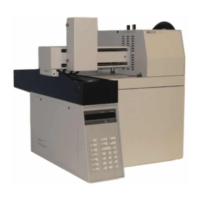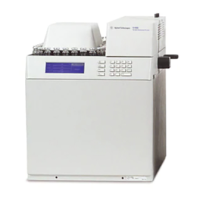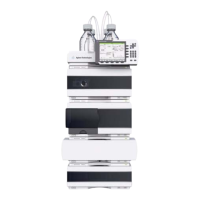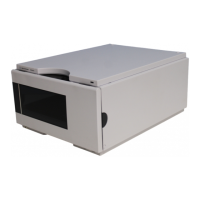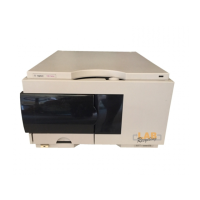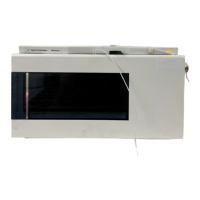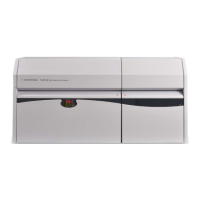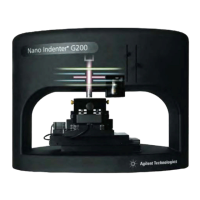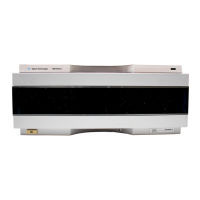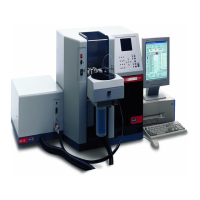139
Order online at www.agilent.com/chem/store
GC/MS Systems
Pressure Symptoms
This section describes unusual pressure
readings and their possible causes. The
symptoms in this section are based on
typical pressures. At typical column flow
rates (0.5 - 2.0 mL/min), the foreline
pressure will be approximately 20 to 100
mTorr. The vacuum manifold pressure will
be approximately 1 x 10
-6
to 1.4 x 10
-4
Torr.
These pressures can vary widely from
instrument to instrument, so it is important
that you are familiar with the pressures
that are typical for your instrument at a
given carrier gas flow and oven
temperature.
The foreline pressures listed can only be
measured on diffusion pump-equipped
systems. Turbomolecular pumps are
controlled according to their speed and do
not have foreline pressure gauges.
The vacuum manifold pressures can only
be measured if your system is equipped
with the optional gauge controller.
Pressure Symptoms
Symptoms Possible Causes
Foreline pressure is too high.
• Pressure is above 100 mTorr.
• Pressure for a given column flow has
increased over time.
• Column (carrier gas) flow is too high.
• Wrong carrier gas.
• Air leak (normally at transferline interface).
• Foreline pump oil level is low or oil is contaminated.
• Foreline hose is constricted.
• Foreline gauge is not working correctly.
• Foreline pump is not working correctly.
Foreline pressure is too low.
• Pressure is below 20 mTorr. • Column (carrier gas) flow is too low.
• Wrong carrier gas.
• Column plugged or crushed by an overtightened nut.
• Empty or insufficient carrier gas supply.
• Bent or pinched carrier gas tubing.
• Foreline gauge is not working correctly.
Vacuum manifold pressure is too high.
• Pressure is above 1.4 x 10
-
4
Torr.
• Pressure for a given column flow has
increased over time.
• Column (carrier gas) flow is too high.
• Wrong carrier gas.
• Air leak.
• Foreline pump is not working correctly.
• Diffusion pump fluid level is low or fluid
is contaminated.
• Defective gauge controller.
• Faulty ion gauge tube.
Vacuum manifold pressure is too low.
• Pressure is below 1.4 x 10
-4
Torr. • Column (carrier gas) flow is too low.
• W
rong carrier gas.
• Column plugged or crushed by an overtightened nut.
• Empty or insufficient carrier gas supply
• Bent or pinched carrier gas tubing.
• Defective gauge controller
.
• Faulty ion gauge tube.
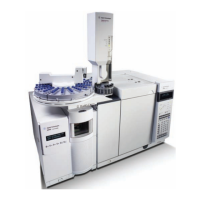
